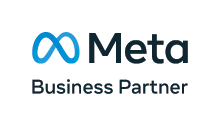How programmatic advertising works
Programmatic advertising platforms buy ad space in an instant, putting ads in front of the people who are most likely to respond. No waiting, no waste. Unlike the old ways, it runs on algorithms that find the right audience and shift placements with every tick of new data. It saves time, cuts costs, and hits the mark—reaching the right people across different placements without requiring long-term commitments or expensive deals directly with publishers.
The growth of programmatic advertising in B2B: Key statistics
What programmatic can do for B2B marketers
- Precision Targeting: Programmatic advertising enables highly targeted campaigns. B2B marketers can zero in on specific profiles—such as finance executives or IT decision-makers.
- Cost Efficiency & Flexibility: By automating processes, programmatic campaigns cut overhead and maximise ad spend. Flexible budgeting makes it easy to test new markets, with real-time adjustments in budget and targeting.
- Cross-Channel Reach: Getting in front of audiences across display, video, mobile, and social channels can rapidly boost B2B brand exposure — especially valuable when entering new markets.
- Scalability & Brand Awareness: Programmatic is perfect for quickly extending brand reach. High-frequency, cross-channel visibility helps B2B brands appear on trusted sites, enhancing global brand credibility.
Bridging the gap between you and your leads
LinkedIn and search advertising are great when it comes to reaching particular professional audiences and capturing high-intent searches. However, they have a few limitations – people don’t spend lots of time on LinkedIn and your prospects aren’t always searching for your products. Programmatic advertising pushes past these limits, widening reach across diverse platforms and contexts. It places your brand in front of potential leads earlier in their journey, engaging them long before other methods can. By placing your message where LinkedIn and search can’t, programmatic can find high-quality leads beyond the typical networks, strengthening the campaign’s overall effectiveness. It is, in essence, a way to reach further and to reach smarter.
Tips for a successful programmatic campaign
- Target accurately: Programmatic advertising can tap into precise B2B audiences, including C-level executives, IT professionals, marketing managers, finance directors, HR specialists, and hard-to-reach audiences in healthcare, education, and construction. You can also target SME leaders by industry and size, reaching relevant decision-makers similar to LinkedIn’s capabilities.
- Define your audience: Use detailed segmentation to target the right B2B decision-makers, leveraging data and audience lists based on industry, role, and company type. We help our clients connect with decision-makers across regions, tailoring content to address specific interests by region.
- Facilitate real-time optimisation: Leverage real-time data features on programmatic platforms for dynamic bid management, creative updates, and targeted audience refinement by accurately tracking live performance metrics like click-through and conversion rates. The leading platforms can then use machine learning to assess ad performance based on your KPIs and automatically adjust bids or display the most relevant creative.
- Creative Consistency: Maintain a unified brand message across display, video, and social channels to strengthen brand identity. Using a variety of ad formats — videos, images, and custom publisher formats — can boost engagement.
- Direct Deals: While these may seem more expensive, and often come with high minimum investments, direct deals can effectively reach senior executives and directors in niche publications or via prominent ad placements on popular websites. We often advise clients to employ a blended programmatic and direct deal strategy to get vast reach and prominent placement on high-visibility platforms like Bloomberg, Financial Times, and The Wall Street Journal.
- Stay on top of analytics: Due to its vast reach, programmatic budgets can incur huge costs in no time. Campaign performance must be reviewed regularly. Metrics like CTR, clicks, CPL, and ROAS can serve as markers of effectiveness, depending on the campaign’s objective. Monitor these carefully, and make adjustments regularly.
The future of programmatic in global B2B marketing
Programmatic advertising’s changing the game for B2B marketers. By 2026, experts say it’ll be smarter yet, with AI helping marketers hit decision-makers just when they’re ready. Privacy regulation is also evolving, forcing brands to focus on building trust while still getting personal in their campaigns.
As digital grows, programmatic is there to help marketers pull it all together across new platforms — connected TV, in-app ads, you name it. The idea is to keep things cohesive, to reach global audiences while adapting to local quirks and trends. Brands that get on board now will be ready for what’s coming, and will be in a better position to grow steadily as the market changes around them. It’s about growth, and maybe a little grit too.
Would you like to find out more about programmatic advertising for B2B? We hosted a live webinar with three experts from the UK and USA. You can view the recording to gain expert insights and learn about strategies for reaching new audiences and scaling internationally with programmatic advertising.
Access the exclusive webinar recording
About the Author
Stefano is a digital marketing consultant at AccuraCast, in charge of developing and executing effective digital marketing strategies to help clients achieve their business goals. His specialities include analysing data, digital strategy planning and teamwork.











